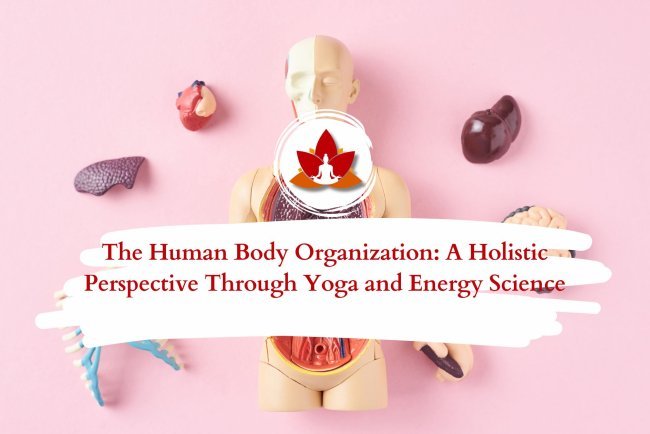REM Sleep vs Deep Sleep: What They Are and How Much You Should Get

Learn how your sleep cycles work — especially the differences between REM and deep sleep — and how each stage contributes to your overall health. Plus, find out how much REM and deep sleep you actually need to wake up refreshed and energized.
Have you ever woken up feeling groggy and exhausted, even after what seemed like a full night’s sleep? If so, you may not be getting the right kind of sleep your body needs to truly recover and recharge.
Fortunately, technology has made it easier than ever to understand your sleep habits. With the help of sleep trackers, smart rings, wearable devices, and even smart beds, you can now gain valuable insights into your sleep patterns.
Read on to better understand how sleep cycles work and how this knowledge can help you optimize your sleep — and, ultimately, your health.
What Are Sleep Cycles?
Sleep happens in repeating cycles throughout the night. One of the most well-known stages is REM sleep—short for Rapid Eye Movement—named because your eyes move quickly back and forth during this stage.
Scientists and researchers generally divide sleep into two main categories: Non-REM sleep and REM sleep. Non-REM sleep is further divided into distinct stages, which are often tracked by wearable devices and sleep monitors. Each stage plays a unique role in helping your body and mind recover and recharge.
Understanding how these cycles work can help you optimize your sleep for better health, mood, and performance.
Light Sleep
Light sleep marks the beginning of your sleep cycle and is the body's way of easing into rest. During this phase, your breathing slows, heart rate decreases, and muscles relax—preparing you for deeper stages of sleep.
Light sleep is divided into Stage 1 and Stage 2:
-
Stage 1 is the transition from wakefulness to sleep. It’s very brief, making up less than 3% of your total sleep. This stage is essentially the process of falling asleep.
-
Stage 2 is the true start of light sleep. Here, brain activity slows down, but it features occasional bursts of electrical activity called sleep spindles. Research suggests these bursts play a crucial role in transferring information from short-term memory to long-term storage, which explains why studying or learning before sleep can significantly boost memory retention.
In fact, Stage 2 is the stage where most people spend the largest portion of their sleep cycles. This isn't just normal—it's essential. Light sleep is vital for brain health, memory consolidation, and emotional processing.
What Is REM Sleep? Why rem sleep matters
REM sleep, or Rapid Eye Movement sleep, is one of the most fascinating stages of the sleep cycle. It gets its name from the fact that during this stage, your eyes move rapidly in different directions—even though they remain closed.
REM sleep is strongly associated with vivid dreaming, as brain activity during this time increases to levels similar to being awake. Interestingly, REM sleep becomes more prolonged in the second half of the night, which is why people often wake up from dreams in the early morning.
5 Major Benefits of REM Sleep:
-
Improves Learning and Memory
REM sleep plays a critical role in consolidating information and enhancing both short-term and long-term memory. -
Aids in Emotional Regulation
This stage helps your brain process emotions, reducing emotional reactivity and improving mood stability during the day. -
Boosts Creativity and Problem-Solving Skills
Studies show REM sleep enhances the brain's ability to think outside the box, helping with creativity and finding solutions to complex problems. -
Supports Brain Development
REM sleep is particularly crucial for infants and children because it aids in brain development—but it continues to be essential for maintaining brain health in adults as well. -
Enhances Mental Well-Being
Regular, healthy REM sleep cycles contribute to better mental health, reducing risks of anxiety, depression, and stress-related disorders.
REM Sleep: Surprising Facts
What Is Deep Sleep? + 6 Powerful Benefits of Deep Sleep
Deep sleep, also known as slow-wave sleep (SWS), is the most restorative stage of the sleep cycle. During this phase, your brain waves slow down significantly, allowing your body and mind to repair and rejuvenate. Deep sleep typically occurs in longer stretches during the first half of the night.
This stage is essential for physical health and healing, playing a critical role in how refreshed and energized you feel upon waking.
6 Key Benefits of Deep Sleep:
-
Supports Physical Restoration and Repair
Deep sleep is when tissue growth and muscle repair occur. It also helps your body recover from daily wear and tear. -
Boosts Immune Function
During deep sleep, the immune system strengthens, helping the body fight off infections and stay healthy. -
Promotes Growth and Development
Growth hormone is primarily released during deep sleep, which is vital for growth in children and cell regeneration in adults. -
Enhances Memory Consolidation
Deep sleep helps the brain process and store memories, improving learning, focus, and cognitive performance. -
Regulates Hormones
Deep sleep plays a crucial role in balancing hormones related to stress, hunger (like leptin and ghrelin), and blood sugar, supporting overall metabolic health. -
Improves Mental Well-Being
Along with physical benefits, deep sleep reduces stress levels and supports emotional regulation, promoting better mental health and resilience.
Key Differences: REM Sleep vs. Deep Sleep
|
Feature |
Deep Sleep (Slow-Wave Sleep) |
REM Sleep (Rapid Eye Movement) |
|
Brain Activity |
Slow brain waves, minimal activity |
High brain activity, similar to when awake |
|
Body State |
Fully relaxed; heart rate, blood pressure, and breathing are slow and steady |
Temporary paralysis of limbs; irregular breathing and heart rate |
|
Dreams |
Rare, fragmented, or vague |
Vivid, intense, and story-like dreams |
|
Main Functions |
Physical restoration, tissue repair, immune support, hormone balance |
Mental restoration, emotional processing, learning, and memory |
|
Timing in Sleep Cycle |
Occurs more in the first half of the night |
Occurs more in the second half, increasing toward morning |
Is REM or Deep Sleep Better? (Why You Need Both)
Neither REM sleep nor deep sleep is better than the other — they serve different yet equally essential functions. These two stages are complementary:
-
REM sleep is crucial for cognitive functions, such as learning, memory, emotional processing, and creativity.
-
Deep sleep is vital for physical restoration, immune system support, cellular repair, and hormone regulation.
Why You Need Both:
A healthy sleep cycle alternates between REM and deep sleep. This balance is critical for overall well-being, influencing everything from mental clarity, emotional balance, and mood regulation to physical healing, immunity, and disease prevention.
Quality Sleep = Quantity + Quality of Cycles
It’s not just about how many hours you sleep but how well your body cycles through each stage — especially deep sleep and REM. Prioritizing both ensures you wake up feeling mentally sharp, emotionally stable, and physically refreshed.
How Much REM and Deep Sleep Do You Need?
The amount of REM and deep sleep you need varies based on factors like age, lifestyle, and overall health. For example, children and teenagers typically require more REM and deep sleep to support growth, development, and learning.
REM Sleep Needs:
-
Adults need about 20–25% of their total sleep to be REM sleep.
-
This equates to roughly 1.5 to 2 hours per night, based on the recommended 7–9 hours of total sleep.
Deep Sleep Needs:
-
Adults typically require about 13–23% of total sleep to be deep sleep.
-
This amounts to approximately 1 to 2 hours per night within a healthy 7–9 hour sleep cycle.
Do You Dream During Deep Sleep?
Dreaming plays an important role in emotional processing, memory consolidation, and mental health. However, not all dreams occur in the same sleep stage.
Dreaming in REM Sleep:
-
REM sleep is most closely associated with vivid, story-like dreams.
-
Brain activity during REM is similar to being awake, which allows for intense and often memorable dreams.
-
REM dreaming is believed to be crucial for processing emotions, experiences, and learning.
Dreaming in Deep Sleep:
-
Deep sleep is primarily responsible for physical restoration and healing.
-
While it’s a common misconception that dreaming doesn’t occur during deep sleep, it does — but these dreams are typically less vivid, more fragmented, and harder to remember.
-
Dreams in deep sleep are less emotional and detailed compared to REM dreams.
REM dreams = vivid, emotional, and memorable.
Deep sleep dreams = subtle, faint, and usually forgotten.
Dream Myths and Misconceptions: Fact or Fiction?
Myth: You only dream during REM sleep.
Reality: Dreams can occur in all stages of sleep, including deep (non-REM) sleep. However, dreams during REM are more vivid, emotional, and easier to remember.
Myth: Dreams in deep sleep are the same as dreams in REM sleep.
Reality: Dreams in deep sleep are typically less intense, less detailed, and harder to recall compared to the highly vivid and emotional dreams of REM sleep.
Myth: If you don’t remember dreaming, you didn’t get REM or deep sleep.
Reality: Not remembering your dreams doesn’t mean you didn’t dream or didn’t enter REM or deep sleep. Dream recall depends on when you wake during your sleep cycle and your brain's memory processing at that moment.
11 Ways to Improve Deep Sleep and REM Sleep
Achieving better deep sleep and REM sleep enhances both mental and physical health. Here are science-backed strategies to optimize your sleep cycles:
1. Track Your Sleep Patterns
Keep a sleep diary to uncover habits affecting your sleep quality. Record details such as:
-
Bedtime and wake-up time
-
Time it took to fall asleep
-
Number and duration of awakenings
-
Overall sleep quality rating
-
Any naps, caffeine, alcohol, medications, or stressful events
2. Stick to a Consistent Sleep Schedule
Go to bed and wake up at the same time every day, including weekends. This helps regulate your circadian rhythm, improving both deep sleep and REM sleep. Occasional sleeping in is fine, but consistency yields the best long-term results.
3. Create a Cave-Like Sleep Environment
Design your bedroom for optimal rest:
-
Cool: 60–67°F (15–19°C) is ideal.
-
Dark: Use blackout curtains or an eye mask.
-
Quiet: Use earplugs, white/pink noise, or noise-canceling devices.
4. Limit Screen Time Before Bed
Turn off TVs, phones, and electronics at least 30–60 minutes before bedtime. Blue light suppresses melatonin, the hormone that regulates sleep.
5. Establish a Relaxing Bedtime Routine
Signal to your brain that it’s time to wind down. Try:
-
Light reading
-
A warm bath or shower
-
Gentle stretches
-
Aromatherapy (like lavender)
-
Guided sleep meditations or calming music
6. Reduce Stress Throughout the Day
Chronic stress interferes with REM and deep sleep. Incorporate practices like:
-
Yoga
-
Breathwork
-
Mindfulness meditation
-
Journaling
-
Massage or self-care rituals
7. Exercise Regularly
Engage in at least 150 minutes of moderate aerobic exercise weekly (e.g., brisk walking, cycling) and two strength training sessions. Exercise improves overall sleep quality but avoid intense workouts right before bedtime.
8. Get Morning Sunlight
Natural sunlight, especially in the morning, resets your internal clock, boosting melatonin production later in the evening. Spending time outdoors daily also supports overall mood and sleep.
9. Avoid Sleep Disruptors (Caffeine, Alcohol, Nicotine)
-
Caffeine: Avoid 6–8 hours before bedtime.
-
Alcohol: It might make you sleepy but disrupts REM and deep sleep later in the night.
-
Nicotine: A stimulant that interferes with falling and staying asleep.
10. Review Medications with Your Doctor
Certain medications can disrupt sleep cycles, including blood pressure meds, antidepressants, and stimulants. If your sleep worsens after a medication change, consult your healthcare provider.
11. Address Underlying Sleep Disorders
If sleep issues persist, seek professional help. Conditions like:
-
Sleep apnea
-
Insomnia
-
Narcolepsy
-
Restless leg syndrome
-
REM sleep behavior disorder
require targeted treatments for optimal recovery and sleep quality.
Takeaways
Whenever you fall asleep, you begin a new cycle of sleep that progresses through non-REM phases to a REM stage. The REM phase is typically when you are dreaming, and your most intense sleep occurs during non-REM sleep. It may be noted that REM sleep and non-REM sleep both hold significance, since while you are sleeping, your brain and body are working on patching up and making things stronger, as well as working out memories. Without enough sleep, it can impact your body and mind health and overall wellness.
REM Sleep vs. Deep Sleep — FAQs
1. Can you control the amount of REM vs. deep sleep you get?
Yes, to some extent, you can influence your sleep stages through lifestyle choices and sleep hygiene. Maintaining a consistent sleep schedule, creating a calm sleep environment, managing stress, and avoiding stimulants like caffeine and electronic devices before bedtime can improve your sleep quality, including both REM and deep sleep. Additionally, exercise, a balanced diet, and limiting alcohol can help optimize the time you spend in these crucial sleep stages.
2. What should you do if you aren’t getting enough REM or deep sleep?
If you're lacking REM or deep sleep, first look at improving your sleep hygiene:
-
Stick to regular sleep and wake times
-
Make your bedroom cool, dark, and quiet
-
Limit blue light exposure before bed
-
Avoid stimulants in the evening
If sleep problems persist, consult a healthcare professional. Issues like sleep apnea, insomnia, chronic stress, or hormonal imbalances can interfere with sleep stages and may require professional evaluation and treatment.
3. Does the need for deep sleep change with age?
Yes, the amount of deep sleep naturally declines with age. Infants, children, and teens need significantly more deep sleep to support growth, learning, and development. While adults, particularly those over 60, tend to experience shorter durations of deep sleep, it remains crucial at every stage of life for physical restoration, immune function, and memory consolidation.
4. What are signs of not getting enough REM or deep sleep?
Common signs include:
-
Daytime fatigue despite a full night in bed
-
Mood swings, irritability, or increased anxiety
-
Difficulty concentrating or memory problems
-
Feeling mentally foggy or unrefreshed upon waking
-
Weakened immune response, getting sick more often
-
Increased cravings for sugar and caffeine due to exhaustion
Chronic deprivation of deep or REM sleep can lead to long-term issues like weakened immunity, increased risk of chronic illnesses, hormonal imbalance, and mental health concerns.
5. How do REM and deep sleep influence waking up feeling refreshed?
Both stages are critical for feeling rested:
-
Deep sleep restores the body, supporting immune health, muscle recovery, and physical energy.
-
REM sleep restores the mind, improving mood, emotional regulation, memory, and cognitive function.
If either is reduced or disrupted—whether by stress, frequent awakenings, or poor sleep habits—you may wake feeling groggy or fatigued despite spending enough time in bed. Balanced and uninterrupted sleep cycles are the key to waking up feeling truly refreshed.
What's Your Reaction?


























